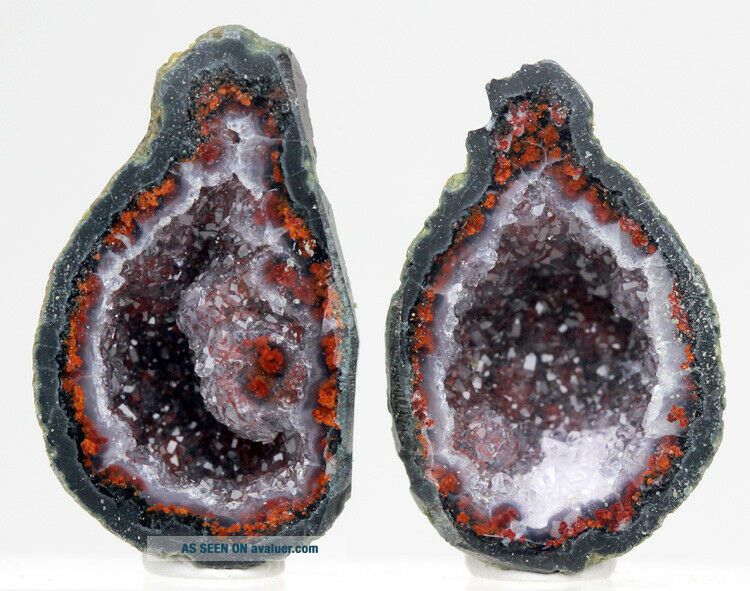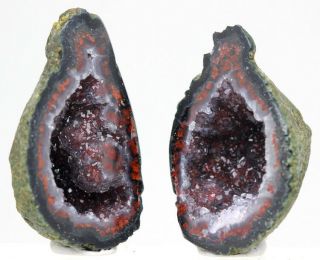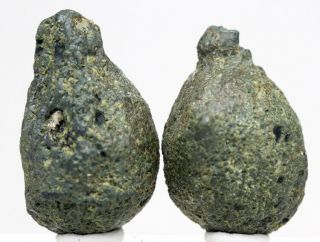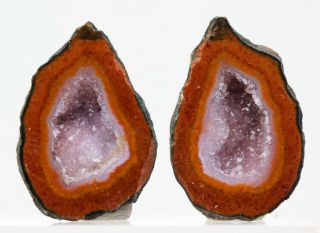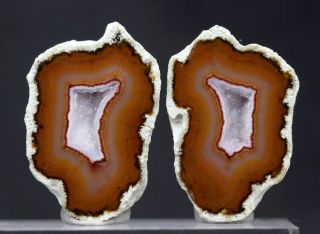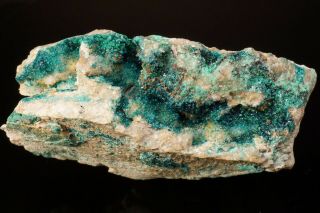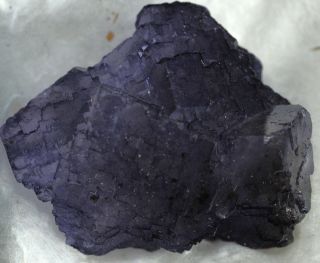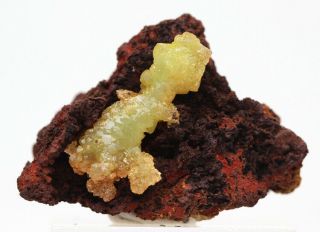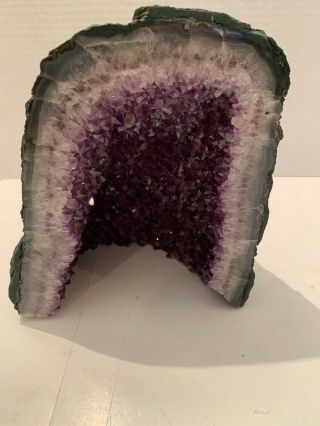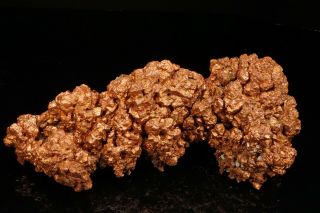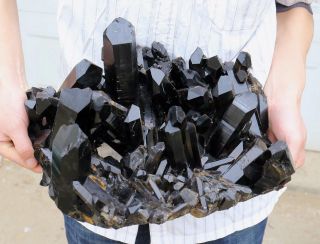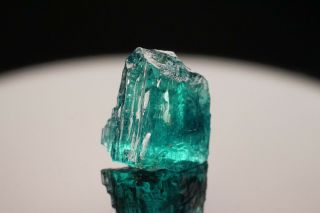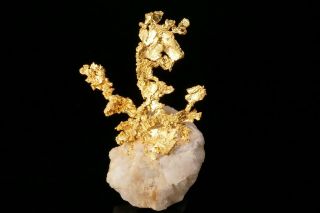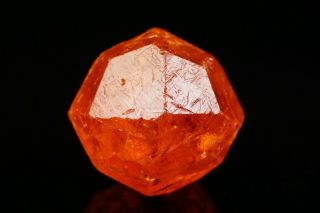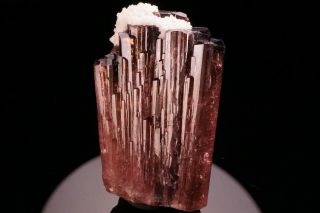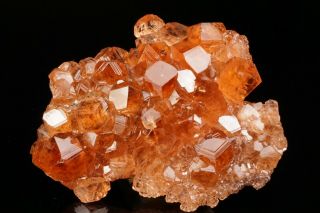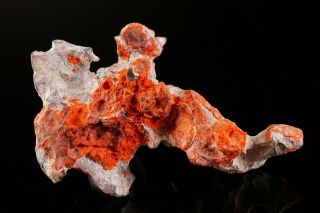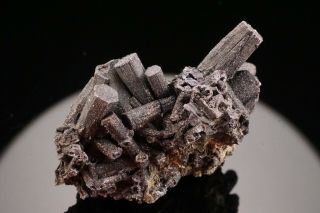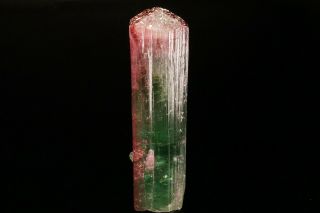RARE Geode Pair Crystal Cluster Tabasco Mexico Tobasco Wire Wrapping Jewelry
Item History & Price
| Reference Number: Avaluer:43791813 | Weight: 10.71 grams |
| Size: 29 mm x 20 mm x 18 mm | Featured Refinements: Geode |
| Country/Region of Manufacture: Mexico | Type: Geode |
I offer a shipping discount for customers who combine their payments for multiple purchases into one payment!
The discount is regular shipping price for the first item and just 50 cents for each additional item!
To be sure you get your shipping discount just make sure all the items you want to purchase are in your cart.
Auctions you win are added to your cart automatically.
For any "buy it now" item...s or second chance offers, be sure to click the "add to cart" button, NOT the "buy it now" button.
Once all of your items are in your cart just pay for them from your cart and the combined shipping discount should be applied automatically.
I offer a money back guarantee on every item I sell.
If you are not 100% happy with your purchase just send me a message to let me know
and I will buy back the item for your full purchase price.
Hi there. I am selling this really cute Tabasco (Tobasco) geode pair crystal cluster mineral specimen.
This particular kind of geode is often wire wrapped or made into jewelry and they are really adorable. They look like little olives.
It comes from Tabasco, Mexico.
Have fun bidding, thanks so much for visiting my auction and have a great day:>)
The following is information about this mineral from wikipedia:
GeodeFrom Wikipedia, the free encyclopediaFor other uses, see Geode (disambiguation).
The lead section of this article may need to be rewritten. Please discuss this issue on the article's talk page. Use the lead layout guide to ensure the section follows Wikipedia's norms and to be inclusive of all essential details. (June 2015) (Learn how and when to remove this template message)
This article includes a list of references, but its sources remain unclear because it has insufficient inline citations. Please help to improve this article by introducing more precise citations. (June 2015) (Learn how and when to remove this template message)
Inside and outside views of the geodeGeode (Greek γεώδης - ge-ōdēs, "earthlike") are geological secondary structures which occur in certain sedimentary and volcanic rocks. They are themselves of sedimentary origin formed by chemical precipitation. Geodes are essentially hollow, vaguely spheroid to oblate masses of mineral matter that form via either of two processes:
by the filling of vesicles (gas bubbles) in volcanic to sub-volcanic rocks by minerals deposited from hydrothermal fluids orby the dissolution of igneous nodules or concretions (that were deposited syngenetically within the rock formations in which they are found) and partial filling by the same or other minerals precipitated from diagenetic water, groundwater or hydrothermal fluids.Geodes differ from vugs in that the former were formed as early, rounded, structures within the surrounding rock and are often removed intact, whereas vugs are irregularly shaped pockets, voids or cavities within a formation, often along a vein or in breccia. Geodes also differ from "nodules" in that a nodule is a mass of mineral matter that has accreted around the nodule nucleus. Both structures had the minerals contained within, deposited from groundwater or hydrothermal processes. Geodes commonly have a chalcedony (cryptocrystalline quartz) shell lined internally by various minerals, often as crystals, particularly calcite, pyrite, kaolinite, sphalerite, millerite, barite, celestite, dolomite, limonite, smithsonite, opal, chalcedony and macrocrystalline quartz, which is by far the most common and abundant mineral found in geodes. Geodes are found mostly in basaltic lavas and limestones. The Warsaw Formation in the Keokuk region near the area where Missouri, Iowa, and Illinois join contains abundant geodes.
Contents [hide] 1 Formation2 Coloration3 Prevalence4 Vugs and crystal caves5 See also6 References7 Further reading8 External linksFormation[edit]Geodes can form in any cavity, but the term is usually reserved for more or less rounded formations in igneous and sedimentary rocks. They can form in gas bubbles in igneous rocks, such as vesicles in basaltic lavas; or, as in the American Midwest, in rounded cavities in sedimentary formations. After rock around the cavity hardens, dissolved silicates and/or carbonates are deposited on the inside surface. Over time, this slow feed of mineral constituents from groundwater or hydrothermal solutions allows crystals to form inside the hollow chamber. Bedrock containing geodes eventually weathers and decomposes, leaving them present at the surface if they are composed of resistant material such as quartz. Many geodes can be found in deserts.
When cut in half, visible bands corresponding to varied stages of precipitation may at times show patterns that reveal points of fluid entry into the cavity and/or varied colors corresponding to changes in chemistry.
Coloration[edit]Terra Mineralia...2H1A6825ОВ.jpgGeode banding and coloration is the result of variable impurities. Iron oxides will impart rust hues to siliceous solutions. Most geodes contain clear quartz crystals, while others have purple amethyst crystals. Still others can have agate, chalcedony, or jasper banding or crystals such as calcite, dolomite, celestite, etc. There is no easy way of telling what the inside of a geode holds until it is cut open or broken apart. However, geodes from a particular area are usually similar in appearance.
Geodes and geode slices are sometimes dyed with artificial colors. Samples of geodes with unusual colors or highly unlikely formations have usually been synthetically altered.
Prevalence[edit]
Fluorite and calcite on quartz stalactites, in geodeGeodes are common in some formations in the United States (mainly in Indiana, Iowa, Missouri, western Illinois, Kentucky, and Utah). They also are common in Brazil, Namibia, and Mexico. Geodes are also abundant in the Mendip Hills in Somerset, England, where they are known locally as "Potato Stones"
Vugs and crystal caves[edit]In 2000 a team of geologists found a cave filled with giant gypsum crystals in an abandoned silver mine near Almería, Spain. The cavity, which measures 1.8 × 1.7 meters and is 8 meters in length, would be the largest crystal cave ever found.[1] The entrance of the cave has been blocked by five tons of rocks, and is under police protection (to prevent looters from entering). According to geological models, the cave was formed during the Messinian salinity crisis 6 million years ago, when the Mediterranean sea evaporated and left thick layers of salt sediments (evaporites). The cave is currently not accessible to tourists.
The world's largest known crystal cave or vug is Crystal Cave, a celestine geode 35 feet (10.7 m) in diameter at its widest point, located near the village of Put-in-Bay, Ohio, on South Bass Island in Lake Erie.
00135



